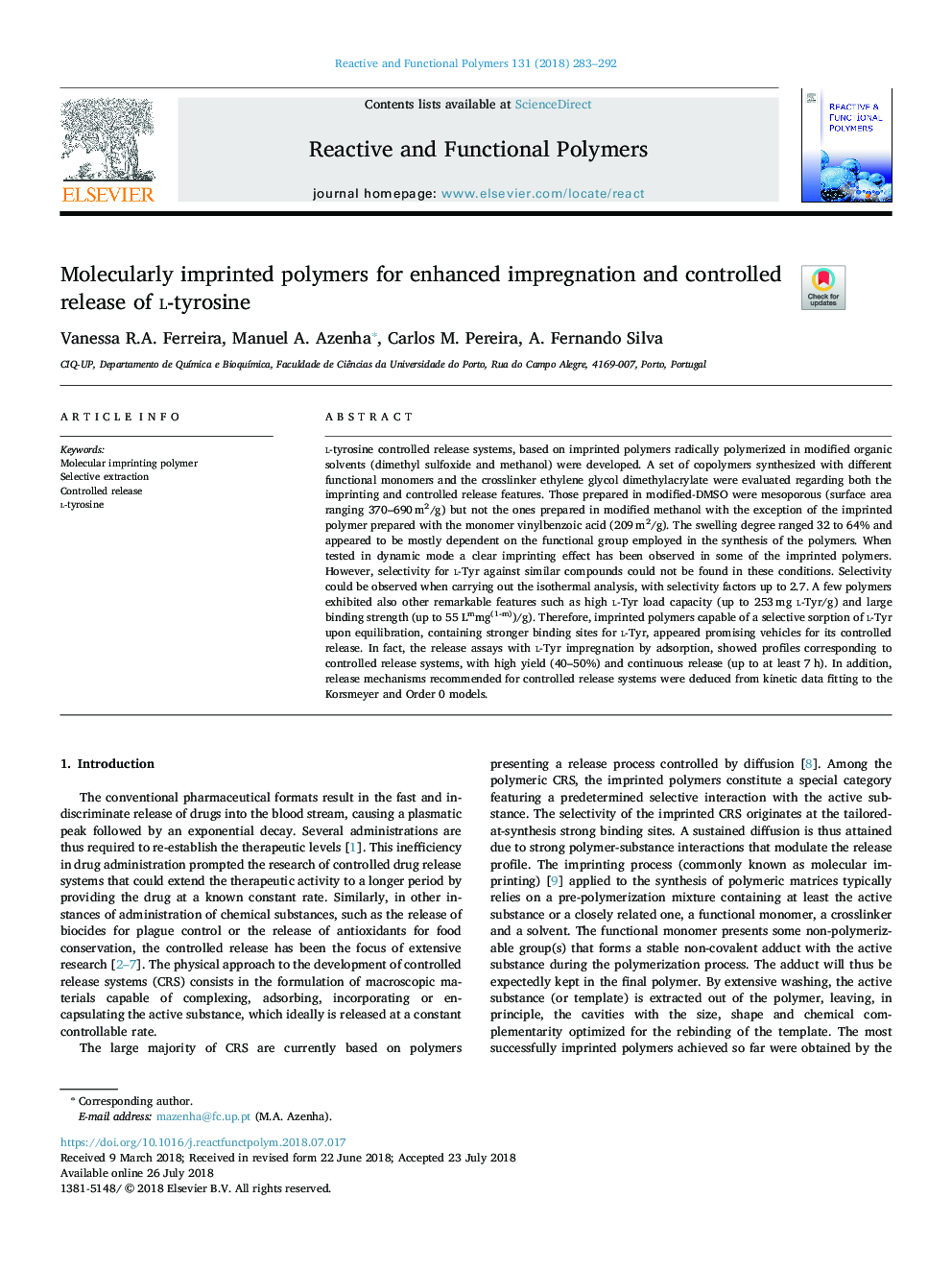| Article ID | Journal | Published Year | Pages | File Type |
|---|---|---|---|---|
| 11006434 | Reactive and Functional Polymers | 2018 | 10 Pages |
Abstract
l-tyrosine controlled release systems, based on imprinted polymers radically polymerized in modified organic solvents (dimethyl sulfoxide and methanol) were developed. A set of copolymers synthesized with different functional monomers and the crosslinker ethylene glycol dimethylacrylate were evaluated regarding both the imprinting and controlled release features. Those prepared in modified-DMSO were mesoporous (surface area ranging 370-690â¯m2/g) but not the ones prepared in modified methanol with the exception of the imprinted polymer prepared with the monomer vinylbenzoic acid (209â¯m2/g). The swelling degree ranged 32 to 64% and appeared to be mostly dependent on the functional group employed in the synthesis of the polymers. When tested in dynamic mode a clear imprinting effect has been observed in some of the imprinted polymers. However, selectivity for l-Tyr against similar compounds could not be found in these conditions. Selectivity could be observed when carrying out the isothermal analysis, with selectivity factors up to 2.7. A few polymers exhibited also other remarkable features such as high l-Tyr load capacity (up to 253â¯mg l-Tyr/g) and large binding strength (up to 55 Lmmg(1-m))/g). Therefore, imprinted polymers capable of a selective sorption of l-Tyr upon equilibration, containing stronger binding sites for l-Tyr, appeared promising vehicles for its controlled release. In fact, the release assays with l-Tyr impregnation by adsorption, showed profiles corresponding to controlled release systems, with high yield (40-50%) and continuous release (up to at least 7â¯h). In addition, release mechanisms recommended for controlled release systems were deduced from kinetic data fitting to the Korsmeyer and Order 0 models.
Related Topics
Physical Sciences and Engineering
Chemistry
Organic Chemistry
Authors
Vanessa R.A. Ferreira, Manuel A. Azenha, Carlos M. Pereira, A. Fernando Silva,
